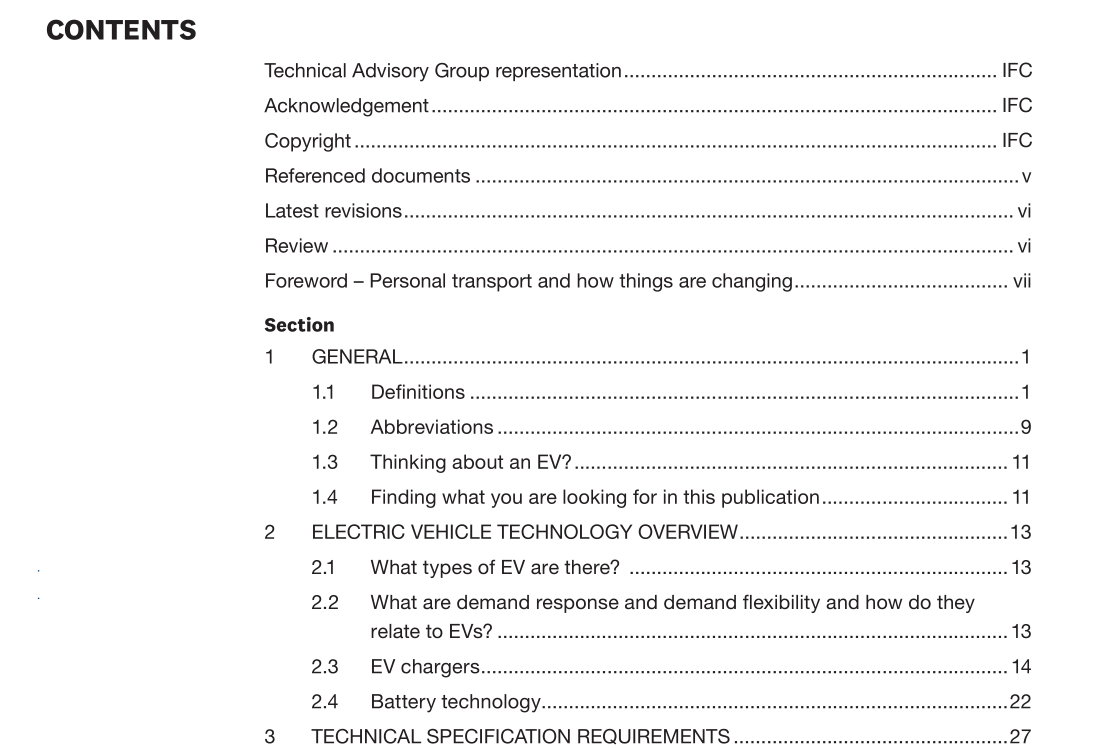SNZ PAS 6011:2021 pdf download.Electric vehicle (EV) chargers for residential use
1.1 Definitions
For the purposes of this guideline the following definitions shall apply: . Aggregator A third-party commercial agent, who acts as an intermediary between the electric vehicle (EV) and the electricity retailer. The aggregator is responsible for the management of EVs in order to supply the owners with their orders and they also participate in the electricity market, with supply and demand energy bids Ampere (amp) Unit of electric current Adaptor (EV adaptor) An accessory incorporating both a plug portion and a socket-outlet portion for the purpose of converting a vehicle connection or EVSE socket outlet Adaptor (socket-outlet An accessory incorporating both a plug portion and one or adaptor) more socket-outlet portions for the purpose of converting an installation socket outlet Alternating current (AC) An electric current that reverses direction at regular intervals. In New Zealand, alternating current is delivered across the entire low voltage residential electrical network at 230 V (volts) and at a set frequency of 50 cycles per second or 50 Hz (hertz) Battery See ‘Lithium-ion battery’ below Battery electric vehicle A 100% battery-powered EV. The batteries are charged by (BEV) connecting to an external electricity source. The battery is also charged travelling downhill and during braking, as energy is recovered by the motor and returned to the battery Battery management Any electronic system that manages a rechargeable battery system (BMS) (cell or battery pack). This can include protecting the battery from operating outside its safe operating parameters, monitoring its state, calculating secondary data, reporting that data, controlling the environment, authenticating, Battery pack This is an energy storage device, containing an array of batteries, whose configuration depends upon the manufacturer. They are normally connected with cell electronics, power supply circuits, and an overcurrent shut-off device, and include electrical interconnections that interface with other external systems, such as the BMS Charging Re-energising an EV’s battery or batteries with electricity Charging cables Cable which connects from power source to vehicle. Includes the IC-CPD EVSE and cables for use with wall box type EVSEs Charging point Any location where electric vehicle supply equipment (EVSE) are permanently located and the vehicle can be plugged in and charged. Locations include home, work, or in publicly accessible locations such as fuel stations and shopping precincts Charging station An element of infrastructure that safely supplies electrical energy for the purposes of recharging EVs. These are also known as an EVSE (see below) Connector A device attached to the cable from an EVSE that connects to an EV allowing it to charge CHAdeMO An abbreviation of ‘CHArge de MOve’, equivalent to ‘move using charge’ or ‘move by charge’ or ‘charge ‘n’ go’, a reference to the fact that it is a rapid charger. This rapid charging system typically provides up to 50 kW at appropriate public charging stations. The CHAdeMO standard, also allows for even faster charging rates Combined charging An international standard for direct current (DC) charging, system (CCS) used by a wide range of vehicle manufacturers. ‘Combined’ refers to the addition of two electrical contacts to the Type 1 or Type 2 AC plug system to enable rapid DC charging. Charging rates in excess of 300 kW are accommodated by the standard Direct current (DC) An electric current of constant direction. This distinguishes it from alternating current (AC) DC fast charging This is the only charging mode that incorporates an off-board charger with a DC output. The DC current is delivered directly to the battery and the on-board charger is bypassed. Mode 4 DC chargers can deliver 600 V DC with a maximum current of 400 A. Because of the high power levels involved in this mode WorkSafe mandates a higher level of communication and stricter safety features, where the charging cable is permanently connected to the charging station. DC fast chargers covers three types fast, rapid and ultra-rapid/high powered. See Table 1 for more information Dedicated short-range Dedicated short-range communications are one-way communications (DSRC) or two-way short-range to medium-range wireless communication channels, specifically designed for automotive use and the corresponding set of protocols and standards
SNZ PAS 6011:2021 pdf download
